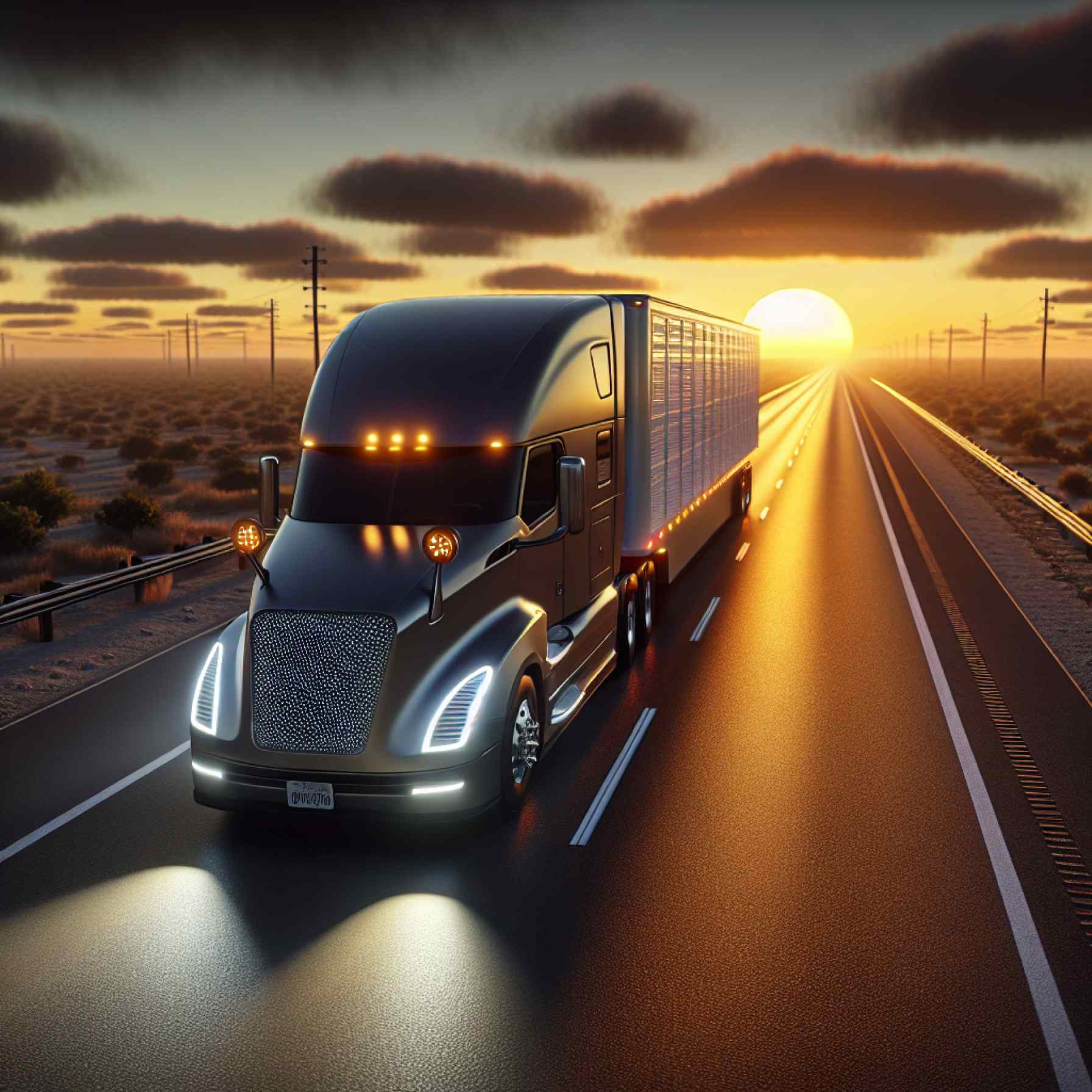- Autonomous trucks are being introduced on Texas highways, primarily between Dallas and Houston, spearheaded by Aurora, a leader in self-driving freight technology.
- Aurora’s driverless semis have successfully traveled over 1,200 miles without a safety driver, indicating significant technological progress.
- Partnerships with logistics giants like Uber Freight are accelerating the adoption of automation in transportation.
- Autonomous trucks could reduce operating costs for trucking companies by up to 42%, according to a McKinsey analysis.
- Concerns about job security and safety persist, as labor unions call for federal regulations to address the impact on employment.
- The rapid development of autonomous vehicles suggests a transformative change in logistics and transportation infrastructure.
- Texas highways may become a testing ground for autonomous technology, shaping the future of the industry.
Texas highways are on the brink of transformation as autonomous trucks quietly make history. With the low rumble of semis now piloted by code, Aurora, a trailblazer in autonomous freight, has launched self-driving delivery trucks on the bustling corridor between Dallas and Houston. They forge ahead with no human hand on the wheel, signaling a profound shift in how goods are moved across America’s vast landscape.
Following years of meticulous refinement, Aurora’s driverless semis have clocked over 1,200 miles without a safety driver—a feat once nestled in speculative fiction, now rolling with the wheels of progress. With logistical giants like Uber Freight and Hirschbach Motor Lines onboard, the pace of innovation accelerates, pointing toward a future where automation rules the road.
For the curious bystander, it might appear like just another procession of semis. But these technology-laden powerhouses are more than mere vehicles; they represent the burgeoning intersection of artificial intelligence and transportation infrastructure. The McKinsey analysis posits that such autonomous advancements have the potential to reduce operating costs for trucking companies by 42%—a glittering incentive driving the industry forward at full throttle.
However, this shift comes shadowed by concern. Labor unions express trepidation over job security and safety in the absence of federal regulation for these advanced machineries. The human element, traditionally at the core of transportation, stands at a crossroads, with the balance between innovation and employment hanging in delicate tension.
With a dozen companies racing toward similar advancements, the Texas highways may soon become a living laboratory for autonomous technology. As machines begin to shoulder the burden of long-haul transport, the landscape of logistics will irrevocably change, leaving us to ponder the future of industries both old and new.
In this new world of silent transformation, the takeaway is clear: the road less traveled is soon to be traveled by nobody at all.
The Future of Autonomous Freight: Are Driverless Trucks the Next Big Thing in Logistics?
Introduction
The advent of autonomous trucks on Texas highways signifies a groundbreaking shift in modern logistics. With Aurora leading the charge, these driverless semis are reshaping the transportation industry, introducing both opportunities and challenges. Let’s explore additional insights and facts surrounding this technological frontier.
Autonomous Freight: Features and Specs
Autonomous trucks, like those developed by Aurora, are equipped with advanced sensors, cameras, and LiDAR technology. These features enable them to navigate complex road conditions safely and efficiently. The trucks are powered by sophisticated machine learning algorithms that allow them to learn from over 1,200 miles of pilot runs without human intervention. The integration of such cutting-edge technology in logistics underscores a potential increase in efficiency and reduction in human error.
Market Forecasts and Industry Trends
According to McKinsey, the autonomous trucking industry has the potential to slash operating costs by up to 42%. The reduction is attributed to savings on labor, fuel efficiency achieved through optimized driving, and reduced downtime with predictive maintenance technologies. As more companies like Aurora, TuSimple, and Waymo vie for supremacy in this burgeoning market, we can expect accelerated advancements by 2030.
Real-World Use Cases and Benefits
1. Cost Savings: Transport companies can save significantly by eliminating driver salaries and benefits, while also reducing fuel consumption and optimizing routes through AI.
2. Safety Improvements: Autonomously operated vehicles could dramatically cut accident rates caused by human error, fatigue, or distraction, contributing to safer roadways.
3. Environmental Impact: The precision in autonomous driving generally results in lower fuel usage, leading to reduced carbon emissions.
Labor Concerns and Limitations
Despite the promise of technological innovation, labor unions express concerns over job security for truck drivers. Regulatory frameworks lag behind these rapid advancements, posing potential safety and ethical challenges. The introduction of autonomous trucks must be balanced with strategic planning for workforce transition, retraining, and new employment opportunities within the technological sector.
Security and Sustainability
Ensuring the cybersecurity of autonomous trucks is paramount. Hackers could potentially disrupt operations, posing risks to safety and logistics. Sustainable practices involve integrating environmentally-friendly technologies and creating policies that encourage a green transition.
Pros and Cons Overview
Pros:
– Significant cost reductions and increased efficiency.
– Enhanced safety and minimized road accidents.
– Environmental benefits from optimized driving practices.
Cons:
– Job displacement concerns in the trucking industry.
– High initial investment for technology development.
– Potential cybersecurity vulnerabilities.
Actionable Recommendations
– Stay Informed: Follow industry trends and updates on regulatory developments concerning autonomous trucks.
– Explore Retraining: Drivers and logistics professionals should explore retraining opportunities in tech maintenance or supervisory roles associated with autonomous vehicles.
– Plan for Cybersecurity: Logistics companies should invest in robust cybersecurity measures to protect against potential threats.
Conclusion
The integration of autonomous trucks into freight transportation heralds a new era in logistics, offering vast opportunities for efficiency and safety while posing significant challenges for the workforce. As we advance into this new frontier, strategic adaptation and proactive policy formulation will be crucial to harness the full potential of autonomous freight technology.
For further insights into autonomous transportation, you can visit the official Aurora website.
By leveraging these insights, readers can embrace or prepare for the upcoming innovations shaping the future of logistics.
